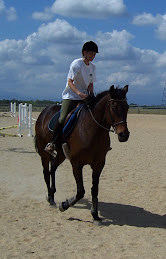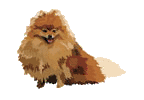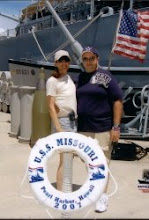Like any other skill or ability, horseback riders come in a large spectrum of types and experience levels. Some riders rode a pony as a child, never to try it again. Others begged their parents relentlessly through their childhood years, only to wind up empty-handed – pretending their bicycles were galloping chargers. The fortunate few did indeed win that pony from worn-down parents. They rode the shaggy beast until outgrown, then moved up to a larger horse, all the while allowing their developing motor skills to include the feel of four feet beneath them. For these riders, using those four feet is as familiar to them as the original biped mechanism of walking or running. Each rider is unique, because each rider has an individual base of learning. How the rider builds upon that base makes all the difference in riding ability.
The range of horse enthusiasts stretches from the pure recreational to the ancient art form. Some simply see the horse as a living dirt bike, charging around hills or dunes, whooping like maniacs. To them, the gears are go, stop. Add a little bit of care and sensibility and you have a car driver: start, stop, turn, low, high gears, even reverse. Go a step further to the airplane pilot: start, stop, turn, take-off, landing, adjustment for balance. Watch a Grand Prix or Spanish Riding School Dressage rider and you will see a helicopter pilot: Forward, backward, spin, hover, roll, pitch, yaw. This artist in horseflesh can balance himself and his horse on two rear hooves in suspended animation. A quantum leap from the dirt bike rider, to be sure.
Most riders exist in the middle of the plane. The sensible continuously strive to improve their strength and balance – to move closer to helicopter pilot status. As a rider adds hours in the saddle, nuances emerge that echo the beauty of the art form: shifts in weight, opening or closing of strides, and the period of suspension between beats of the canter. How the horse carries his ears or swishes his tail suddenly means something. Even riding a turn can be done in worlds-apart fashions: the dirt-bike rider usually treats a turn like a NASCAR bank, throwing balance to the wind. Yet done properly, a turn can become an upright, balanced ballet move where the horse flexes his body through the ribcage and molds to the curve. To the untrained eye, this is very difficult to see. It has to be felt in the seat and hands to be appreciated fully.
Most of us have been “horseback riding” at one time or another. The next time you give it a try, pay attention to your style. Few of us can achieve helicopter pilot perfection, but at least we should strive to appreciate the grandeur of those four feet beneath us.
Tuesday, June 9, 2009
Subscribe to:
Post Comments (Atom)



.jpg)




No comments:
Post a Comment